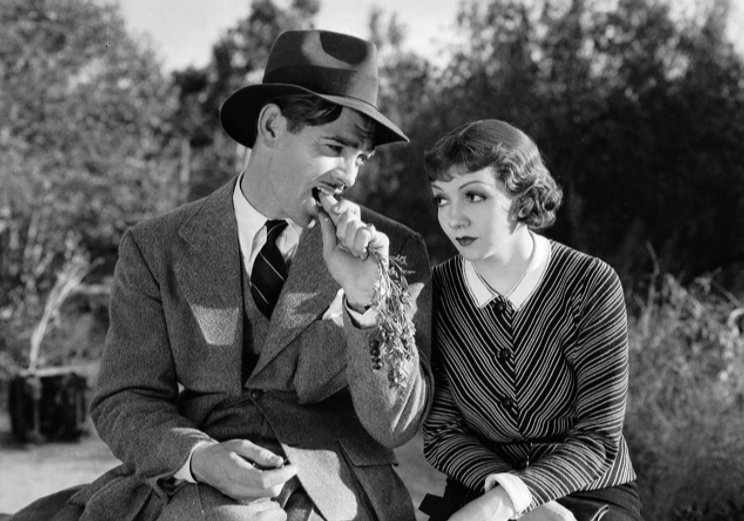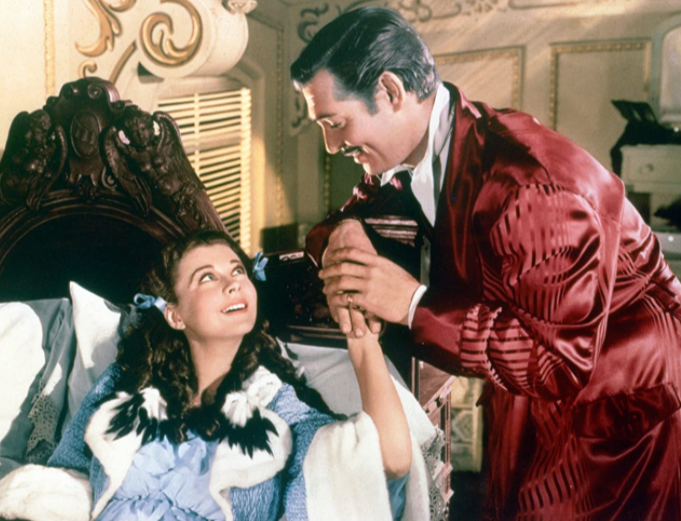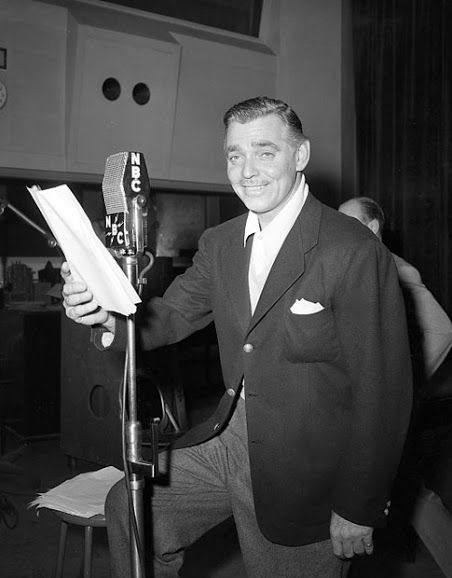Happy Birthday, Clark Gable!
Posted by Ivan G. Shreve, Jr. on Feb 1st 2021
In Hollywood, he was reverentially referred to as “The King.” William Clark Gable, born in Cadiz, OH on this date in 1901, would celebrate an acting career that spanned over 35 years—23 of them with motion picture studio Metro-Goldwyn-Mayer. For classic film fans, he’s a symbol of virility and sex appeal; the American Film Institute ranked him seventh on their 1999 list of greatest male stars of classic cinema. A most impressive achievement for someone who was once dismissed by the legendary Darryl F. Zanuck (then an executive with Warner Bros.): “His ears are too big and he looks like an ape!”
Although Clark Gable was named after his father (William Henry “Will” Gable, an oil well driller), he was almost always addressed as “Clark.” Gable’s mother died when he was ten months old and his stepmother stoked his show business aspirations by teaching him to play piano. Young Clark also learned to play brass instruments, becoming a member of the town band at thirteen. A year later, Gable left school and home to work in a tire factory in Akron. His musical talents and love of Shakespeare provided inspiration for a career in acting, which he began to seriously consider at the age of 17 after watching a performance of the play The Bird of Paradise.

After a momentary detour in the field of wildcatting (at the behest of his father), Clark Gable made a full commitment to acting. He performed in several stock companies as he made his way West, winding up penniless in Oregon where he was forced to take on odd jobs like selling neckties and lumberjacking. Another traveling company Clark joined was headed by a veteran actress, Josephine Dillon, who took an interest in Gable. Under her tutelage, he was able to get bit parts in films like Forbidden Paradise (1924) and The Merry Widow (1925).
Despite credited parts in movies like North Star (1925), Clark Gable had a tough time getting anywhere in the “flickers.” He returned to touring stage companies, eventually making it to Broadway in productions of Machinal (1928) and Love Honor and Obey (1930). Clark’s turn in a Los Angeles production of The Last Mile impressed Lionel Barrymore, who wangled the neophyte actor an audition with MGM. Leo the Lion took a pass, but Gable’s performance as a swarthy villain in The Painted Desert (1931) convinced them to take a second look. Clark would appear in a dozen features in 1931—notably A Free Soul (with his benefactor Barrymore) and Night Nurse (made at Warner Bros. with Barbara Stanwyck). In that same year, Gable also appeared in three of the eight movies he’d eventually make in total with Joan Crawford: Dance, Fools, Dance; Laughing Sinners; and Possessed.

Clark Gable quickly proved himself to be big box office for MGM with hits like Red Dust (1932) and Dancing Lady (1933)…yet his tumultuous private life gave MGM’s Louis B. Mayer ulcers. To keep “The King” in line, he lent Gable out to Columbia Pictures for a project directed by Frank Capra — an unassuming little comedy titled It Happened One Night (1934). Clark was unhappy about the assignment, but no doubt changed his mind when Night swept all five major categories at the Academy Awards (Film, Director, Actor, Actress, Screenplay) the following year. His studio welcomed him back with the role of Fletcher Christian in Mutiny on the Bounty (1935), another huge box office smash (and Best Actor Oscar nomination).
During his stay at MGM, Clark Gable would make seven films with “Queen” Myrna Loy (Manhattan Melodrama, Test Pilot), six with Jean Harlow (Hold Your Man, China Seas), four with Lana Turner, and three with Norma Shearer. Gable’s most famous role, however, would be made outside his familiar environs. In fact, to get Clark for the role of Rhett Butler in Gone with the Wind (1939), producer David O. Selznick had to cough up both some cash and distribution rights. Gable initially displayed the same amount of enthusiasm as he did for It Happened One Night, but could take satisfaction in knowing that he had one of the most memorable closing lines in cinematic history (“Frankly, my dear…”). In addition, he got to play the best-liked character in the film. (Sadly, despite the flurry of Oscars won by Gone with the Wind, Clark lost the Best Actor trophy to Goodbye, Mr. Chips’ Robert Donat. It was Gable’s third and final nomination.)

Clark Gable’s leading lady in 1932’s No Man of Her Own was actress Carole Lombard. While it would be their only onscreen teaming, offscreen they tied the knot (in 1939, his third marriage). Thus began one of the happiest periods of his life. Clark was on top of the world with hits like Boom Town (1940) and Honky Tonk (1941). However, that world came crashing down with Lombard’s death in a plane crash in 1942. Devastated, Gable joined the Army Air Corps and spent two years during WW2 as an aerial cameraman and bomber gunner in Europe.
Writer Milt Josefsberg noted in his book The Jack Benny Show that Clark Gable was the only major star who turned down a guest appearance on his boss’ program. Jack’s writers had sketched out what would have been a very funny show (with Benny taking advantage of Clark’s hefty fee by forcing him to do every job—and I mean every job—associated with the program), but Gable’s longtime battles with “mike fright” scotched any further plans. “The King” was able to overcome his microphone malady on a few occasions; he guest-starred on programs like Command Performance, Good News of 1938/1939, and Mail Call, and joked with the likes of Burns & Allen and Edgar Bergen & Charlie McCarthy. Clark also made the rounds on various anthology programs: The Cavalcade of America, The Gulf/Lady Esther/Camel Screen Guild Theatre, The Hallmark Hall of Fame, The Lux Radio Theatre, and The Silver Theatre, to name a few.
Clark Gable resumed his movie career in 1945, yet despite still being popular with the moviegoing public (the reissues of Gone With the Wind saw to that) he never really recaptured that “Jack Dempsey in a tuxedo” quality of his earlier career, particularly after age set in. There would be good movies to follow—The Hucksters (1947), Command Decision (1948), Mogambo (1953), Run Silent Run Deep (1958)—and his final film, The Misfits (1961), allow him to go out with a bang. It was released posthumously after his death in 1960 at the age of 59.

Clark Gable didn’t let “microphone jitters” keep him from a classic appearance on Maxwell House Coffee Time, starring George Burns & Gracie Allen. You’ll find this November 21, 1946 broadcast on our collection Illogical Logic—an excellent way to celebrate our friend’s natal anniversary today.

